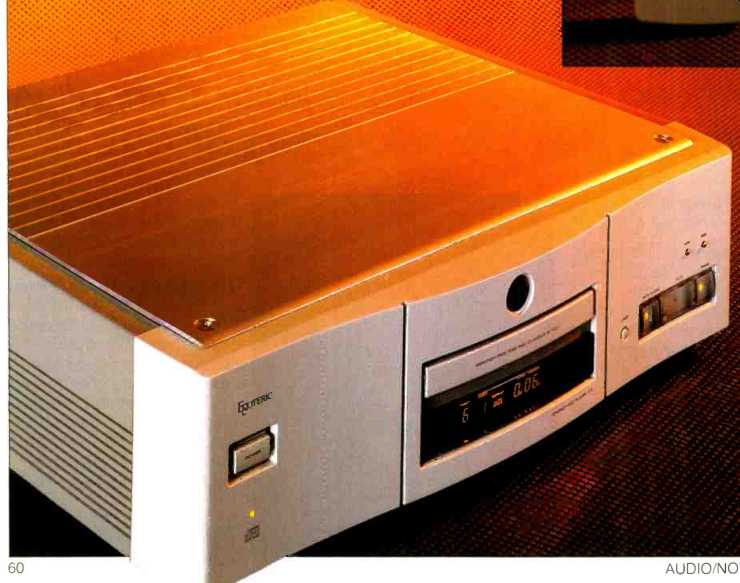
Manufacturer's Specifications:
Frequency Response: Unbalanced output, 0 Hz to 20 kHz, ±0.3 dB; balanced output, 20 Hz to 20 kHz, ±0.5 dB.
S/N: Greater than 110 dB.
Dynamic Range: Greater than 102 dB.
Harmonic Distortion: 0.0013% or less at 1 kHz.
Channel Separation: Greater than 110 dB at 1 kHz.
Analog Output Level: Unbalanced, 2 0 V rms; balanced, 19.5 dBm (7.3 V rms).
Digital Output Level: Coaxial, 0.5 V peak to peak; optical,-15 to 21 dBm.
Number of Programmable Tracks: 20.
Power Requirements: 120 V a.c. 60 Hz, 24 watts.
Dimensions: 17 3/4 in. W x 5 3/8 in. H x 15 3/4 in. D (45.1 cm x 13.7 cm x 40 cm).
Weight: 40 lbs. (18.1 kg).
Price: $5,000.
Company Address: 7733 Telegraph Rd., Montebello, Cal. 90640, USA.
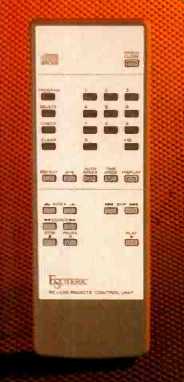
When an audio company asks potential customers to spend $5,000 on a CD player, it had better offer superior performance and superior sound quality. This is particularly true now that such refinements as one-bit D/A conversion and multi-stage noise shaping have found their way into low-cost CD players. Happily, the Esoteric X-1 CD player, manufactured by TEAC does offer a wide enough assortment of technological and sonic improvements over lesser players to call for extensive auditioning.
One of the important features found in the X-1 is a high-precision, vibration free disc-clamping system that uses a large-diameter, concave turntable to hold the disc rigidly during play. By accurately clamping the disc by its entire surface area, surface vibrations are minimized, making it possible for the player to read signals with greater precision.
The X-1 also adds dither to the signal to reduce quantization noise. Apparently (TEAC's brochure is not clear about this subject), a digital noise shaping filter shifts the dithering noise into the ultrasonic range, where it is rendered inaudible.

The 20-bit D/A converter uses a "1/16-shift" digital offset system. This combats errors in the most significant bit, said to occur near 0 V and cause zero-crossing distortion in multi-bit converters. By adding 1/16 of full-scale voltage to the entire digital signal, the offset system shifts the signal's actual zero reference up to a level where crossing distortion is no problem. According to TEAC, this improves linearity in the range below-18 dB, where the music's sound is mostly concentrated. The converter section also includes a 25-bit filter with eight-times oversampling, a third-order Butterworth output filter, and separate negative and positive power supplies. Construction features include a vibration resistant structure using a central transport mechanism and a front panel made from a high-density compound of stainless steel and ceramic material.
The signal circuits are built up from monocrystalline oxygen-free copper transmission wires, and the p.c. board has extra-thick, 70-micron traces for increased reliability and lower resistance.
Control Layout
Front-panel controls are minimal, consisting of the usual "Power" switch plus softly illuminated buttons for "Open/Close," "Play," and "Pause" and non-illuminated buttons for forward and reverse track skip and to turn on a light inside the CD compartment so you can observe the disc's rotation.
A display at the center of the panel shows the state of play, including "Track" and "Index" numbers, time remaining on the track or disc, and the status of such operating modes as "Repeat," "Auto Space" (which inserts an automatic 4-S pause between tracks), and programming.
As you'd suspect from the multifunction display and the minimal front panel, most of the X-1's features are operated from its supplied remote control. Its numeric keys are used for programming and for direct selection of track numbers and index points during play. Other buttons control all programming and repeat-play functions, select index points, and turn "Auto Space" on and off.
The rear panel carries coaxial and optical digital outputs, a switch to turn off the digital outputs, phono and XLR jacks for, respectively, unbalanced and balanced analog outputs, and a socket for the a.c. power cord.
Measurements
Using the unbalanced analog outputs, I measured frequency response (Fig. 1) as flat from 10 Hz to 20 kHz, well within ±0.1 dB. That even exceeds TEAC's claim for this unit. Over most of the frequency range, THD + N for a signal at maximum recorded level (0 dB) was well below 0.002%, rising only slightly at higher audio frequencies, as shown in Fig. 2.
How much of that THD + N is actual THD? I checked the harmonic components in an FFT spectrum analysis (not shown) of a 1-kHz signal at full recorded level and found that the harmonics at 3, 5, and 9 kHz reached amplitudes of about -110 dB. From this, I calculated that the actual harmonic distortion was only about 0.00055%, or about as low as I have ever measured for any CD player or any separate D/A converter.
Figure 3 shows how THD + N varies with recorded signal levels, over the range from-90 to 0 dB. At maximum recorded level, THD + N measures 96 dB, which corresponds to 0.0016%, correlating well with the earlier results shown in Fig. 2. At lower signal levels, THD + N (relative to maximum recorded level) is even lower, better than-98 dB from levels of 30 dB downward.
As an additional check, I looked at a spectrum analysis of dithered and undithered 2-kHz tones at -90 dB recorded level. For undithered signals, harmonic components arising from quantization distortion were apparent over much of the audio range, with the noise floor hovering at around 135 dB. When dithering was added, those distortion components disappeared, but noise level increased to a floor of about 120 to -125 dB. This excellent, low noise level is attributable to TEAC's noise-shaped dithered signals, described earlier.
Separation, shown in Fig. 4, measures 118 dB for the left channel and 116 dB for the right channel at 1 kHz.
Even at 16 kHz, channel separation remains greater than 100 dB for both channels.
Overall signal-to-noise ratio, measured while playing a "no signal" track of my CBS CD-1 test disc, was 110.6 dB for the left channel and an almost identical 110.1 dB for the right channel. The EIAJ dynamic range measured 99.7 dB for either channel. A spectrum analysis plot of the residual noise produced by the Esoteric X-1 is shown in Fig. 5. Note that even at 60 Hz, where I normally expect to see a noise peak caused by the power supply's fundamental frequency, the worst peak (for the right channel) is still 123 dB below maximum recorded level--obviously inaudible.
Figure 6 shows deviation from perfect linearity. With undithered signals, linearity is almost perfect from 0 dB (maximum recorded level) down to 90 dB, and deviation is less than 1.0 dB at the extremely low level of-90 dB; this attests to the X-1's excellent D/A conversion system. Using dithered signals at even lower levels (70 to 100 dB) produces even better results, as shown. I could detect absolutely no measurable deviation from linearity, even at -100 dB. My final graphic plot is of a fade-to noise test using dithered signals from 60 to -120 dB (Fig. 7). This test, in addition to providing further evidence of excellent linearity, also allows me to derive the system's EIA dynamic range, which is approximately 115 dB. Additional spot measurements were made for SMPTE-IM distortion, which turned out to be 0.0049% for the left channel and 0.0054% for the right channel. Clock accuracy was within 0.0108% of perfection.
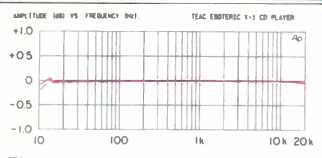
Fig. 1--Frequency response, from 10 Hz to 20 kHz. Dashed curve is right channel.

Fig. 2--THD + N vs. frequency, in percent relative to maximum output level.
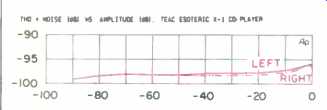
Fig. 3--THD + N vs. signal amplitude.
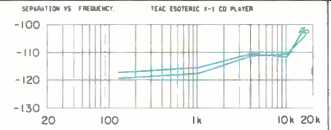
Fig. 4--Separation vs frequency.
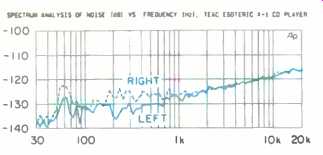
Fig. 5--Spectrum analysis of residual noise when playing "no signal" test
track.

Fig. 6--Deviation from perfect linearity.

Fig. 7--Fade-to-noise test.
Use and Listening Tests
Using the special Pierre Verany "defects" disc, I determined that this player could handle missing data extending for 1.0 mm. That's not the best I have measured for a CD player, but it is well above the minimum standards found in the Philips/Sony Red Book of basic specifications for CD players and recordings. On the other hand, the chassis and mechanism of the Esoteric X-1 are so stable and impervious to external vibration that I literally had to pound on the sides of the unit for the system to mistrack.
For my listening tests, I chose a couple of new CDs that I recently acquired. Telarc's release of Offenbach's Gaité Parisienne (CD-80294), played by the Cincinnati Pops Orchestra under the direction of Erich Kunzel, sounded crisp and clear, typical of Telarc's approach to classical recording.
On a lesser CD player, however, this same recording seemed overly strident (an effect that some CD players have been known to produce on many Telarc releases). No such stridency was evident when the recording was played on the X-1.
A second CD that did particularly well on the X-1 was a Cedille Records release (CDR 9000 008) of a pair of cello sonatas by two modern composers, Easley Blackwood and Frank Bridge. Expecting to hear an assortment of dissonances, I was pleased and surprised, particularly by the Blackwood Cello Sonata, Op. 31. As Blackwood himself put it, "I have tried to approach, as nearly as possible, the style that I think Schubert would have discovered if he had lived until 1845." Be that as it may, the rich sonority of the solo cello in this piece came through with not the slightest evidence of roughness that sometimes accompanies cello compositions heard on lesser CD players.
In short, the TEAC Esoteric X-1 is a superb instrument in which great emphasis has obviously been placed on sound quality as well as performance reliability. Even if you can't afford to own this gem of a CD player, do yourself a favor and give the Esoteric a listen. If nothing else, you will then have a reference against which to compare CD players that you can afford!
-Leonard Feldman
Also see: Vacuum Tube Logic Straight-Line D/A Converter (Nov. 1992)
(Source: Audio magazine, Nov. 1992)
= = = =